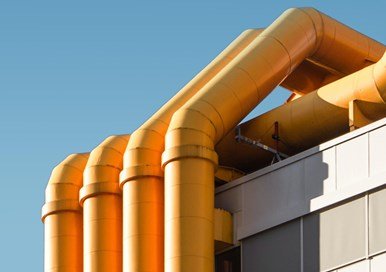Did you know that investing in warehouse real estate is more profitable than most of the other forms of commercial real estate? Let’s investigate the unique advantages of warehouse investing.
We are all aware of the fact that real estate investing has been a popular passive income strategy for quite a long time. One of the best and safest ways to make money in real estate is to invest in warehouses, which are a type of commercial real estate.
Some people tend to limit themselves by investing in residential real estate, trying to avoid the risk of being associated with warehouse investment. But, commercial real estate, just like warehouses, offers significantly higher returns compared to residential real estate.
That is due to the fact that warehouses tend to appreciate in value, both from internal and external causes. For example, one internal factor that can influence the value of a warehouse is proactive management. This includes establishing cost-effective improvements on the property, which improves the usability of the property and the overall attractiveness of the property.
External factors may include variations in supply and demand for warehouse real estate. As the local business and market grow simultaneously, more and more people need real estate but space becomes more scarce, hence the increase of each property value.
Let’s explore other reasons why warehouse investment is a smart call.
#1 High Level of Versatility
Warehouse properties are one of the most versatile real estate investment options available. They offer the perfect blank canvas to create the business of your dreams, as they allow for incredible flexibility in terms of usage.
Some of the benefits of investing in warehouses include:
- They can be transformed into a variety of different business venues, including manufacturing sites, offices, restaurants, and even retail spaces.
- They provide a high level of versatility for investors, allowing them to customize the space to suit their business needs.
- Warehouses offer ample space, making them suitable for a wide range of businesses, from large-scale manufacturing operations to cozy restaurant spaces.
If you’re seeking a real estate investment that offers a high level of versatility, warehouses should definitely be on your radar.
#2 Reliable Source of Passive Income
Warehouses have become increasingly popular in recent years as a reliable source of passive income. Here are some of the key reasons why investing in a warehouse property can be an excellent way to earn passive income:
- High rental yields: Warehouses typically offer higher rental yields than residential or commercial properties. This allows investors to earn a higher return on investment without having to put in additional effort.
- Low maintenance costs: Warehouses are relatively low-maintenance properties, which reduces the amount of time and money investors have to spend on upkeep and repairs.
- Long-term leases: Warehouse tenants typically sign long-term leases of five or ten years, which provides investors with a stable source of income and reduces the risk of vacancy.
- Minimal tenant turnover: Unlike residential properties, turnover rates among warehouse tenants are typically low. This reduces the amount of time and money investors have to spend finding new tenants.
Overall, warehouses offer a unique combination of benefits, making them an excellent source of passive income for savvy investors.

#3 Businesses Compete For Logistical Space
When speaking of logistics, the international term for industrial warehousing is creating some new competition in the secondary CRE markets. Demand for these types of assets is outperforming retail and office, and it is the CRE with one of the highest demands across the globe. With the low cap rates, secondary markets are proving to be very viable options now that primary asset prices are on the rise, all in efforts to move products and goods faster.
When it comes to investments and choosing where to invest the money, many people are drawn to residential properties. However, commercial properties can, and usually are, more profitable in many ways.
Despite the weakened economy and the housing sector struggling to gain traction, the demand for warehouse space is great. This alone can benefit the entire housing sector. Those investors who take advantage of this situation and act fast may be rewarded accordingly.
We hope this introduction to warehouse investments inspires you to take the next step. Always do your homework and research it thoroughly, as well as consult a fiduciary financial professional before conducting any major warehoused investments decision.
Discover Our Available Warehouse Spaces

Warehouse distribution space. THE CAMPUS at San Diego Business Park.

Flexible warehouse spaces. Sizes range from 407 RSF - 18,945 RSF.
#4 Potential for Value-Add and Repurposing
Many warehouses, especially older or underutilized ones, offer opportunities for value-add investments. They can be upgraded or repurposed for different uses, such as data centers, urban logistics hubs, or even mixed-use developments, depending on zoning regulations. This flexibility allows investors to adapt to market changes and potentially increase the property’s value and return on investment.
#5 High Demand, Low Supply
The demand for warehouse space has surged, primarily due to the exponential growth of e-commerce and the need for businesses to have distribution centers close to consumers. This demand is often coupled with a relative scarcity of available properties, especially in strategic locations, which can lead to higher rental rates and potentially greater returns on investment.
Want to Expand Your Business? We Can Help!
If you are looking for a spacious location for your business or individual needs, we are here for you.
Our warehouses offer state-of-the-art facilities and a large enough space for growth and expansion. And if you want to get even more out of your investment, our team can help make proactive improvements that will undoubtedly increase the value of your property.
So don’t wait any longer – contact us today and explore our range of unique warehouse spaces now.
















